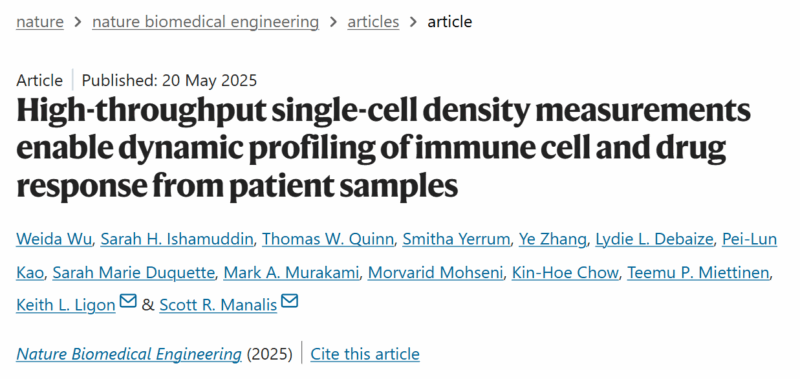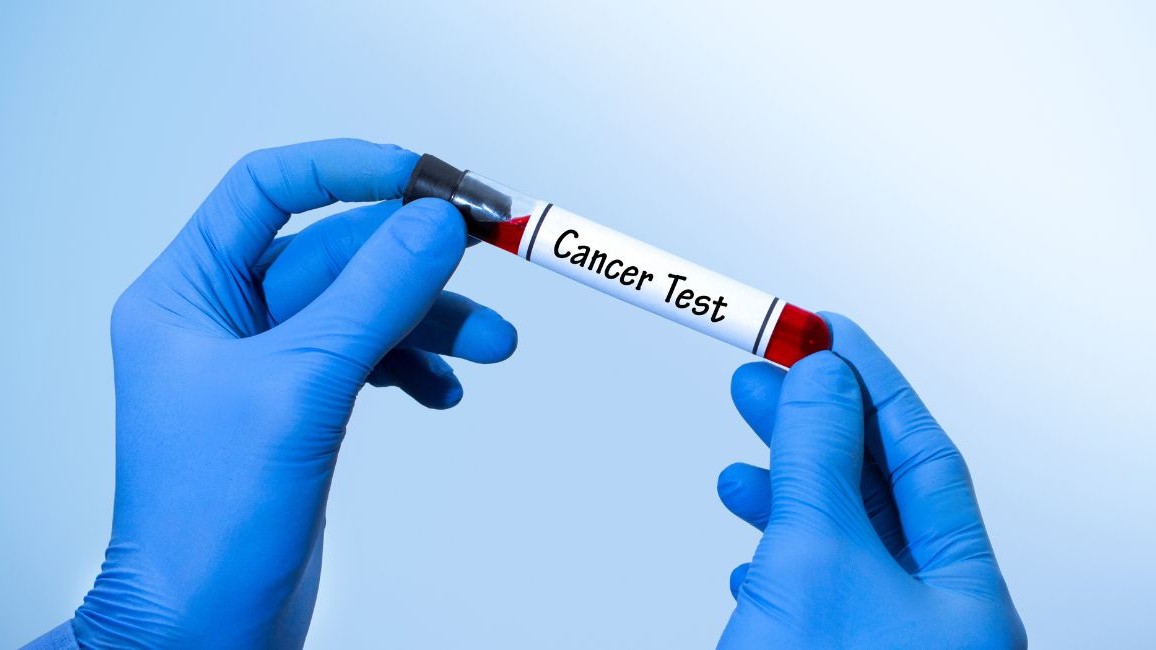Dana-Farber Cancer Institute shared a post on LinkedIn about a paper by Weida Wu et al. published in Nature Biomedical Engineering:
“As powerful as modern cancer medicines are, they don’t work for everyone.
What if there were a quick test to help determine which treatment would work best for an individual’s cancer?
This tool is in development and could become a valuable part of oncology decision-making, thanks to the work of pathologist Keith Ligon, director of our Center for Patient-Derived Models, and collaborator Scott Manalis, of the Massachusetts Institute of Technology. They’ve created a device that rapidly determines the density of live cells and provides a readout of their response to a medicine.
This device assesses live tumor cells at a rate of up to 30,000 an hour. Cells are removed using a biopsy or blood draw and injected into a microfluidic device through tiny channels. As each cell flows through, the device measures its mass and volume.
Together, these numbers calculate the cell’s density, which determines its ability to function. Molecules and organelles must interact physically to carry out the cell’s work. If they end up too far apart or too close together, the cell stops functioning properly.
However, the mass and volume of a cell do fluctuate under normal conditions. For instance, mass doubles before a cell divides, and volume increases to accommodate that change. Previous research shows that when a cell’s mass increases, but its volume doesn’t, the cell is likely close to death.
‘The coupling between density and fundamental processes like cell death suggest it could be a valuable biomarker for drug response,’ says Ligon.
To test the device’s predictive ability, Ligon’s team used an animal model of pancreatic ductal carcinoma. They knew that this tumor model would be sensitive to trametinib, but resistant to gemcitabine. They placed cells from untreated tumors into petri dishes and applied the medicines separately.
After treatment, they flowed treated cells through the device, measured mass and volume, and calculated density. Cells treated with trametinib showed more dramatic density changes than those treated with gemcitabine, indicating a stronger reaction to trametinib.
‘The technologies are sensitive enough that you can see that the cell is changing and responding to the drug,’ says Ligon.
This signal is visible within two days of treatment, suggesting it could provide a readout within 48 hours of a biopsy. Other methods, like patient-derived organoids, require tumors to grow, taking weeks and potentially delaying treatment.
Ligon and Manalis launched Travera, a company commercializing an earlier version of this technology. Based on this study, the company created a device measuring both mass and volume to determine density.
‘This device and the idea of functional precision medicine are really exciting to patients. They want to know if a drug is going to work. We’d like to find the best way to answer that question for them as quickly and precisely as possible,’ says Ligon.”
Title: High-throughput single-cell density measurements enable dynamic profiling of immune cell and drug response from patient samples
Authors: Weida Wu, Sarah H. Ishamuddin, Thomas W. Quinn, Smitha Yerrum, Ye Zhang, Lydie L. Debaize, Pei-Lun Kao, Sarah Marie Duquette, Mark A. Murakami, Morvarid Mohseni, Kin-Hoe Chow, Teemu P. Miettinen, Keith L. Ligon, Scott R. Manalis.
You can read the Full Article in Nature Biomedical Engineering.

More posts featuring Dana-Farber Cancer Institute.


